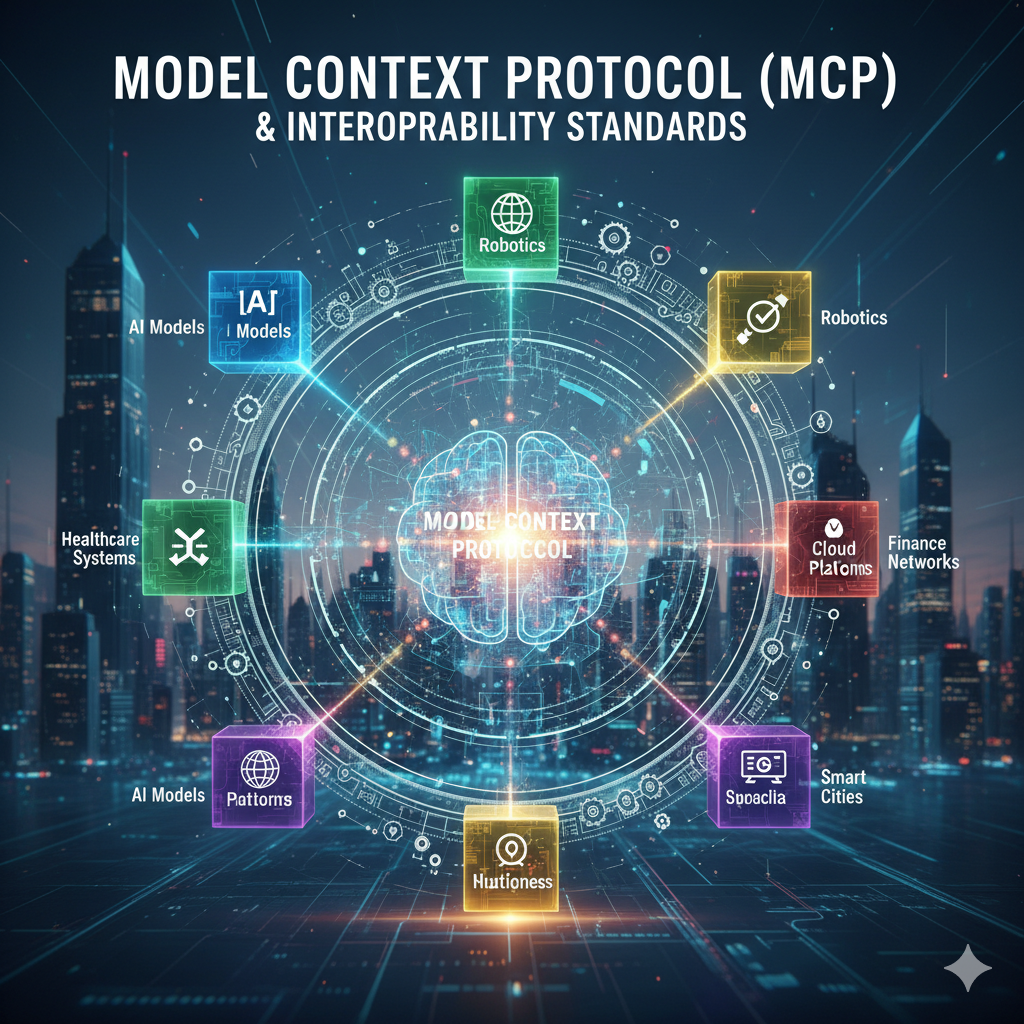💡 What Is the Model Context Protocol (MCP)?
The Model Context Protocol (MCP) is a new system that makes communication easier between different AI tools and software platforms.
Think of it as a translator for various AI models and applications. Before MCP many tools spoke different “languages” — which made information sharing tough. MCP fixes this by giving them a shared set of rules for talking to each other.
✅ Example: A chatbot, a code editor, and a data tool can now team up without special setup.
🔍 Why Do We Need Interoperability in Software?
In today’s world, companies use many digital tools — chatbots, analytics dashboards, automation systems, and more. The issue is, these tools often lack good connections with each other.
This is where interoperability comes into play — it means making different systems work together without hiccups. With MCP, software developers don’t need to build a new integration for every single platform. It saves time, money, and effort — and gives users a quicker simpler experience.
✅ Simple Example: Think of interoperability like charging cables — instead of needing a different one for every device, MCP is like having a single universal connector for all AI tools.
⚙️ How Does MCP Work?
MCP serves as a link between various AI systems. It specifies how data gets shared and how instructions move from one to another.
Here’s what it does:
- One app can grab info from another.
- It links different AI models (such as GPT or Claude) with no extra work.
- It allows info to flow in real time.
This approach makes software more like building blocks — coders can mix and match tools as needed.
✅ SEO Keywords: MCP protocol, AI interoperability, software communication, AI data sharing
🚀 How MCP Helps Developers and Users
The Model Context Protocol offers these key advantages:
- Simple Connections: Tools can team up right away, without extra coding.
- Quicker Building: Developers can make apps that link with others more .
- Smoother User Experience: Users enjoy consistent performance across platforms.
- Cost Savings: Teams cut expenses by spending less time on custom integrations.
✅ SEO Keywords: benefits of MCP, software interoperability, AI integration
🌍 Real-Life Uses of MCP
MCP is already in use in the AI and software industry. Here are some examples:
- OpenAI gives ChatGPT the ability to connect with outside tools through MCP.
- Developers can create plugins that function with multiple AI models.
- Companies integrate AI into their apps using MCP – for example, to automate customer support or analyze data.
This proves that MCP isn’t just an idea – it’s already making AI tools more intelligent and interconnected.
🔮 The Future of Interoperable AI Systems
In the years to come, software and AI tools will share information more – similar to how apps on your phone exchange data. MCP and other standards like it will help build a world where AI systems communicate .
Similar to how the internet required a shared protocol (HTTP) to link websites, AI now needs MCP to connect its tools and platforms.
This marks a significant advance towards a more intelligent interconnected digital landscape.
🧩 To Sum Up
The Model Context Protocol (MCP) is transforming the way AI systems link up and work together. It allows different software tools to exchange information with ease, cuts down on time for developers, and boosts the user experience.
Put — MCP is laying the groundwork for the upcoming wave of smart, linked software.
